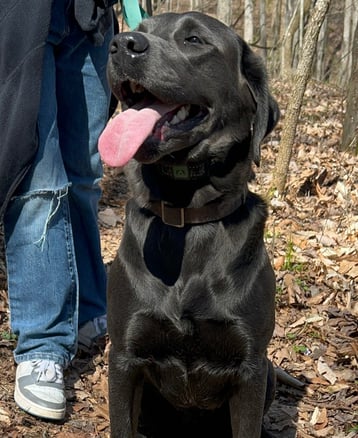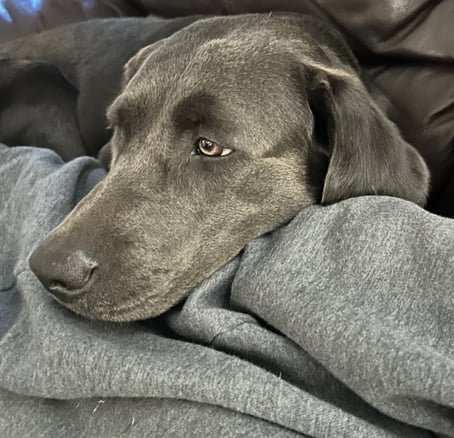The American Kennel Club’s Stance on Registration of Silver Labradors:
Response of Jack Norton of the AKC on 1/24/00 giving AKC official position on the issue of Silver Labs.
The registry of the American Kennel Club is based on parentage and not the coat color of a member of any breed.
In 1987 the AKC, in corporation with the Labrador Retriever Club of America, conducted an inquiry into the breeding of litters that contained members that were registered as silver. An AKC representative was sent to observe these dogs. The report and color photographs of these dogs were reviewed by AKC staff and representatives of the Labrador Retriever Club of America. Both Parties were satisfied that there was no reason to doubt that the dogs were purebred Labrador Retrievers, however they felt that the dogs were incorrectly registered as silver. Since the breed standard at the time described chocolate as ranging in shade form sedge to chocolate, it was felt that the dogs could more accurately be described as chocolate rather than silver. This remains the current policy of the American Kennel Club.
Jack Norton
Special Services Dept
What is a Dilute Lab?
Silver, Charcoal, and Champagne are the dilute versions of Chocolate, Black, and Yellow, respectivley.
Dogs that have a dilute coat color (also called Silver, Charcoal or Champagne) are affected by the gene known as the “D” gene. This gene is present in all Labradors and it has two variants: “D” and “d”. The “D” variant is the standard one, while the “d” variant is the dilute one. A Labrador can have either two copies of the standard gene (“DD”), or one copy of each gene (“Dd”), or two copies of the dilute gene (“dd”). A Dd Labrador has one standard gene and one dilute gene, and it can produce both standard and dilute colored puppies depending on its mate. A dd Labrador has only dilute genes, and it will always have a dilute coat color, such as silver, charcoal or champagne. A white lab is not always a dilute lab (although it can be). The yellow coat color can range from almost white to dark fox red. Any of these shades can be dilute or not, but it can be hard to tell by looking at them, so sometimes a genetic test is needed to find out. The same applies to the other standard colors: black, chocolate and yellow.
Controversy
Dilute labs are a source of debate among Labrador enthusiasts. This is because the first recorded dilute lab that appeared around 1920 was born after the breed registry was closed. Some people think that another breed (maybe the weimaraner) was involved in creating the dilute lab. But we don’t have any way to prove that. We can’t do a DNA test on the first dilute labs, and any dog that has only Labs in its ancestry for the last 5+ generations will probably test as a purebred Labrador. Another interesting thing is that many breeds we know today have the dilute gene! This includes some breeds that were used to develop the Labradors we know today. It is also possible that the gene changed and allowed dilution in Labradors to happen. The truth is, nobody really knows if the first dilute labs were purebred Labradors, and even purebred Labradors themselves were once a mixed breed when they were being developed, but today, dilute Labs look, act and test like purebred Labradors. Are dilute Labs purebred Labradors? By DNA standards, they are. By breed standards, they are not accepted colors. By opinion, you have to make up your mind. I can say that dilute Labs act just like any standard Lab I know. They are good hunters and wonderful family pets just like any Labrador should be. The American Kennel Club (AKC) registers dilute labs as their base coat color (black, chocolate & yellow). The first dilute labs that were recorded were accepted by AKC as purebred Labradors and have Labrador pedigrees.
While I personally do not treat or see the dilute labs any different than a 'non dilute,' I am aware that there is sometimes a preference and a desire to not have dilutes in your bloodline. For this reason I am vocal and honest when I am aware that one of my animals carries the dilute gene and will pass it on.
A final word on the silver coloration:
The origin of the silver coloration in Labradors remains uncertain at this time. For the AKC to recognize the silver coloration, the parent club would first have to rewrite the standard and vote to accept the silver coloration. For the first of these situations to happen, the silver Lab would have to gain support among a number of its parent club members (as the yellow coloration once had its enthusiastic supporters back in England during the early days of the breed). This scenario is most likely not to happen in the near future. As such, breeders, either established or novice, who may consider breeding for silver will most likely find many doors closed to them in terms of breeding to the best Labrador bloodlines. As such, there are many factors (of which the true origin of the silver is just one) to take into consideration before a breeder or owner should consider the silver colored Lab.
Sources (https://www.labbies.com/silver.htm)




